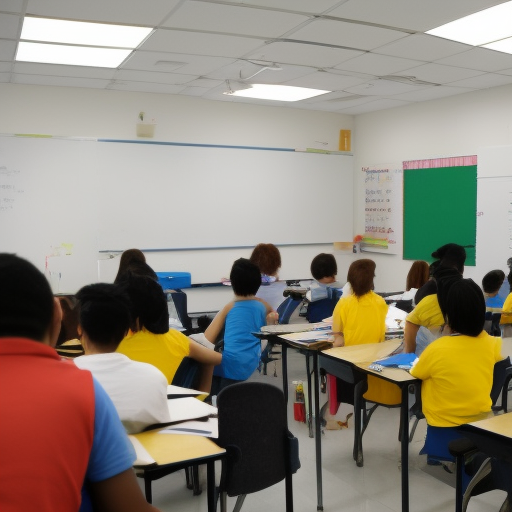How to deal with behavior problems in preschool
As a preschool teacher, you know firsthand how difficult it can be to manage behavior problems in the classroom. Maybe you have a student who constantly disrupts the lesson, or perhaps you have a child who is struggling with social skills and causing conflicts with their peers. Whatever the issue may be, it’s important to address these behavior problems in a proactive and effective manner.
In this blog post, we’ll explore how to deal with behavior problems in preschool, including potential issues and solutions for addressing these challenges. By the end of this post, you’ll have a better understanding of how to create a positive and supportive classroom environment for all of your students.
Understanding the Root Cause of Behavior Problems
Before we dive into specific strategies for addressing behavior problems, it’s important to understand that there is often a deeper reason behind a child’s challenging behavior. It could be that the child is struggling with developmental delays or experiencing some form of trauma or stress in their personal life.
As a preschool teacher, it’s your job to help children understand and regulate their emotions, and this starts with understanding what may be causing the child to act out. Here are a few potential root causes of behavior problems in preschool:
- Developmental delays: Children who are struggling with developmental delays, such as language delays or delays in gross or fine motor skills, may act out as a way to communicate their frustration or discomfort.
- Trauma or stress: Children who have experienced trauma, such as abuse or the loss of a loved one, may exhibit challenging behavior as a way to cope with their emotions.
- Attention seeking: Some children may act out in order to get attention, whether it be positive or negative.
- Lack of structure: Children thrive in environments with clear rules and routines, so a lack of structure may lead to behavior problems.
- Inability to regulate emotions: Preschool-age children are still learning how to manage their emotions, and some may struggle with this more than others.
By taking the time to understand the root cause of a child’s behavior problems, you can better tailor your approach to addressing these challenges.
Setting Clear Rules and Expectations
One key aspect of managing behavior problems in preschool is setting clear rules and expectations for the classroom. This helps children understand what is expected of them, and gives them a sense of structure and predictability.
Here are a few tips for setting clear rules and expectations:
- Keep the rules simple and consistent: Preschool-age children have short attention spans, so it’s important to keep the rules simple and consistent. For example, you might have a rule that says “Raise your hand before speaking” or “Use kind words and actions.”
- Use positive language: Instead of focusing on what children shouldn’t do, try to use positive language to communicate the rules. For example, instead of saying “Don’t hit,” you might say “Use gentle hands.”
- Use visual aids: Children are more likely to remember and follow rules when they are accompanied by visual aids, such as pictures or charts.
- Review the rules regularly: Make a point to review the rules with your students on a regular basis, such as at the beginning of each week or after breaks. This helps reinforce the rules and ensures that everyone is on the same page.
Creating a Positive and Supportive Classroom Environment
In addition to setting clear rules and expectations, it’s important to create a positive and supportive classroom environment. This can help prevent behavior problems from occurring in the first place and make it easier to manage any issues that do arise.
Here are a few ways to create a positive and supportive classroom environment:
- Encourage collaboration and teamwork: By encouraging collaboration and teamwork, you can help children learn to problem-solve and work together. This can also help prevent behavior problems that might arise from competition or jealousy.
- Provide positive reinforcement: When children exhibit positive behavior, be sure to praise and reinforce that behavior. This can help encourage more positive behavior in the future.
- Use positive discipline techniques: Instead of punishing children for misbehaving, try using positive discipline techniques such as redirecting the child to a more appropriate activity or offering a choice of two positive behaviors.
- Encourage independence: Children thrive when they feel capable and in control of their own actions. Encourage independence by giving children choices and allowing them to make decisions within limits.
- Create a calming space: Sometimes, children may act out due to overwhelming emotions. Create a calming space in your classroom where children can go to relax and regroup. This might include activities such as coloring or reading books.
Dealing with Specific Behavior Problems
In addition to the strategies mentioned above, there are also specific strategies you can use to address specific behavior problems. Here are a few common behavior problems in preschool and strategies for addressing them:
Disrupting the Lesson
If you have a student who is constantly disrupting the lesson, it’s important to address the behavior as soon as possible. Here are a few strategies you can try:
- Give the child a visual reminder of the rules: Use a visual aid, such as a picture or chart, to remind the child of the rules for behavior in the classroom.
- Use a quiet signal: Come up with a quiet signal that you can use to gently remind the child to calm down and pay attention.
- Provide one-on-one attention: Sometimes, children who disrupt the lesson are seeking attention. Consider giving the child some one-on-one time to address their needs and help them feel more connected to the class.
- Use positive reinforcement: When the child is behaving appropriately, be sure to praise and reinforce that behavior. This can help encourage more positive behavior in the future.
Struggling with Social Skills
If you have a child who is struggling with social skills and causing conflicts with their peers, it’s important to help the child learn appropriate ways to interact with others. Here are a few strategies you can try:
- Model appropriate social skills: Children often learn by watching and imitating those around them, so be sure to model appropriate social skills for the child.
- Use role-playing: Role-playing can be a great way for children to practice appropriate social skills in a safe and controlled environment.
- Encourage problem-solving: Help children learn how to solve problems by encouraging them to brainstorm solutions and choose the best option.
- Use positive reinforcement: When the child is exhibiting appropriate social skills, be sure to praise and reinforce that behavior.
Struggling with Emotional Regulation
As mentioned earlier, preschool-age children are still learning how to manage their emotions. If you have a child who is struggling with emotional regulation, here are a few strategies you can try:
- Provide a calming space: As mentioned earlier, creating a calming space in the classroom can be a great way to help children relax and regroup when they are feeling overwhelmed.
- Use deep breathing exercises: Teaching children deep breathing exercises can be a helpful way to calm their emotions and help them regulate their behavior.
- Use positive reinforcement: When the child is exhibiting appropriate emotional regulation, be sure to praise and reinforce that behavior.
- Encourage the child to express their feelings: Help children learn how to express their feelings in an appropriate way by encouraging them to use words to describe their emotions. This can be especially helpful for children who struggle with emotional regulation.
- Use visual aids: Visual aids, such as emotion charts or facial expression cards, can be a great way to help children understand and identify their emotions.
- Provide support and comfort: When a child is struggling with emotional regulation, it’s important to provide them with support and comfort. This might include a hug, a comforting word, or simply being present to listen.
Conclusion
Managing behavior problems in preschool can be challenging, but by understanding the root cause of the behavior, setting clear rules and expectations, creating a positive and supportive classroom environment, and using specific strategies to address specific behavior problems, you can create a positive and supportive learning environment for all of your students. Remember to be patient and understanding, as children are still learning and growing, and with the right approach, you can help them develop the skills they need to be successful learners.






